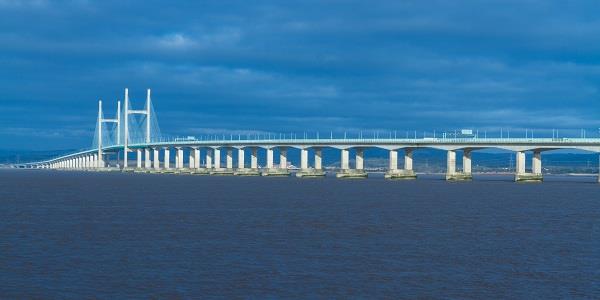
For visitors driving to South Wales from Birmingham and points north, this may not mean much; but holidaymakers heading for Pembrokeshire and St Brides Castle by car on the M48 or M4 motorways are now just a little better off.
£5.60 better off, to be precise: the levy which until 17th December 2018 was charged on cars using the Severn Bridge and the Second Severn Crossing (recently renamed the Prince of Wales Bridge) to cross the River Severn from England into Wales.
The charge was introduced when the first bridge (at top) was opened in 1966, and set at two shillings and sixpence, over the years rising to a peak of £6.70 in 2017 while the bridges were in the hands of a private consortium, before falling back to its current (now abolished) level when the bridges came back under the control of the Highways Agency.
The original Severn Bridge cost £8m to build. The bill for the Prince of Wales Bridge (below), opened in 1996, came in at a rather heftier £330m, and running costs for both bridges amounted to £15m a year. Heady figures; but the private consortium Severn River Crossing Plc was collecting £72m a year, amassing over £1bn between taking ownership in 1992 and handing the bridges over to the Highways Agency during 2017.

Interestingly – and contentiously – the charge was only applied one way, and was thus seen by many as a tax on entering the principality. Not quite the ‘Welcome to South Wales’ message that Pembrokeshire and other South Welsh counties were looking to project. The region’s heavy industries – coal and iron – have to an extent been replaced by tech businesses and creative companies. But tourism is the big draw; South Wales is a beautiful part of the world.

Welcome to Wales: visitors to the South now just a little bit more 'Croeso'
Of course the real beneficiaries of scrapping the toll will be regular ‘working-day’ commuters from, say, Bristol to Cardiff, who will save up to £1,400 a year; and hauliers – the tax for lorries was a swingeing £16.70 a time. (£20, at its peak.) But it’s nice to know that more occasional visitors will benefit too.
And don’t think too ill of the consortium – which was only following a precedent: tolls to cross the Severn Estuary, by train, car, ferry, charabanc, or any other ‘assisted’ means, date back at least 800 years.
“[17th December 2018 was] a very historic day,” says historian Anne Rainsbury. “…The first time you [could] cross the Severn Estuary for free.”

